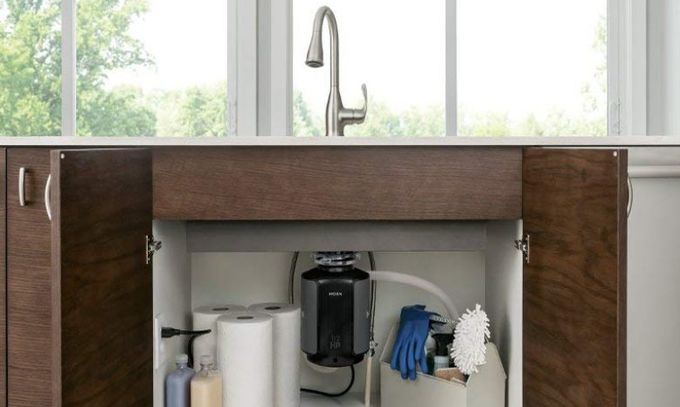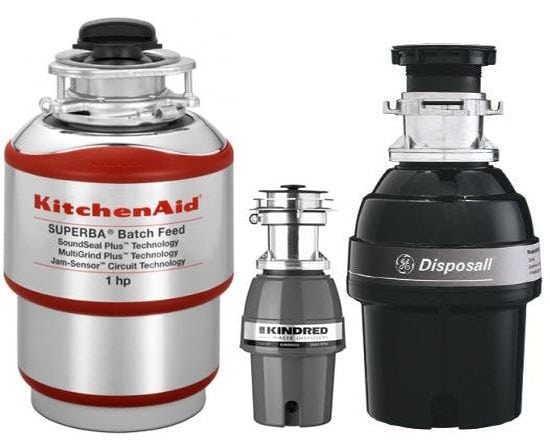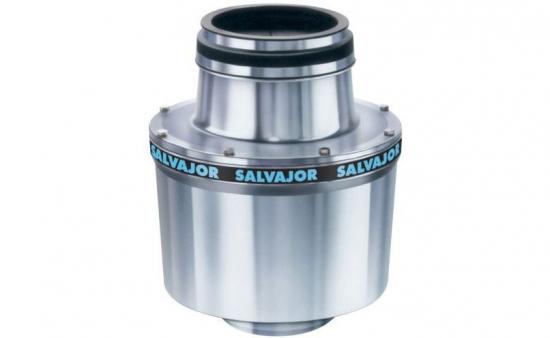Garbage Disposal was invented in 1927 by John Hames. Ten years later, he created the In-Sink-Erator Company that today is one of the leaders in this segment of the market. Interestingly, initially the American authorities were set up extremely negatively in relation to this invention, fearing that it would provoke clogging the sewerage. But the inventor demanded a technical examination. As a result, the US Health Care Agency concluded that this technology reduces the possibility of clogging.
The design of the device has been constantly developing for 90 years and, of course, modern models are not very similar to their prototype.
Today, this device is installed in almost every kitchen, and the market offers a wide range of different models. Of course, the choice of the optimal garbage disposal depends on its price, functionality and technical characteristics. Mounting the garbage disposal under the sink also has some features.
Features
Garbage disposal is intended for grinding the following food wastes:
– the peel of fruits and vegetables;
– the peel of watermelon and melon;
– fruit pits;
– the peel of nuts;
– sunflower seeds;
– a fish;
– eggshell;
– the small bones of chicken and meat;
– pasta;
– disposable paper towels, napkins;
– cigarette butts;
– rice, buckwheat, etc.;
– bread, etc.
Manufacturers do not recommend using a device for grinding the following food wasters:
– the large bones;
– corn cobs;
– the husk of onions;
– a large fish scales in large quantities;
– shells of large marine animals;
– polyethylene;
– fabric and thread;
– fat.
These wastes provoke clogging device. Grinding the fruit pits and citrus peel provides self-cleaning in inner chamber and is an effective prevention.
Most modern models have protection against the accidental ingress of metal objects into the sink drain, for example, of the fork, spoon or knife. In this case, it automatically turns off the device.
Main technical values
Power
Model with high power easily grinds most types of garbage. The minimum power value is 550 W. These models are good suitable for a family of 4 people. Their water consumption is approximately 3 liters of water per family member per day.
Of course, the cost and electric power consumption of powerful models with power of 1300 W and more are significantly higher. Therefore, the optimal choice depends on a reasonable compromise.
Rotational speed
This parameter in mechanical models is directly proportional to the water flow intensity. Electric models provide 1400 or more rpm. The rotation speed directly affects the model performance.
Working chamber capacity
On the one hand, the dimensions of the model are limited by volume of free space under the sink. On the other hand, the model efficiency is directly proportional to chamber capacity. Therefore, the selection of the model with a maximum chamber capacity taking into account the limitation in size is optimal.
Material
Stainless steel is considered the best material for the devices. Some models have a special corrosion-resistant coating to protect against the impurities in the water (for example, of heavy metals).
Additional functions
More expensive models are often equipped with additional functions. This list includes:
– increased noise insulation;
– automatic overload protection;
– reverse rotation;
– several speeds;
– reinforced the drain flange.
Cost
Today the market offers models with price ranging from $ 50 to $ 600. The price depends on the material, power and producer of model. Today, InSinkErator (ISE), Waste King, KitchenAid, Frigdaire, Hydromaid, Whirlpool and Bosch are the most popular brands.
Naturally, powerful models for restaurants and bars are significantly more expensive.
Mounting the device costs about $ 40.
This video demonstrates the correct use of the device.



